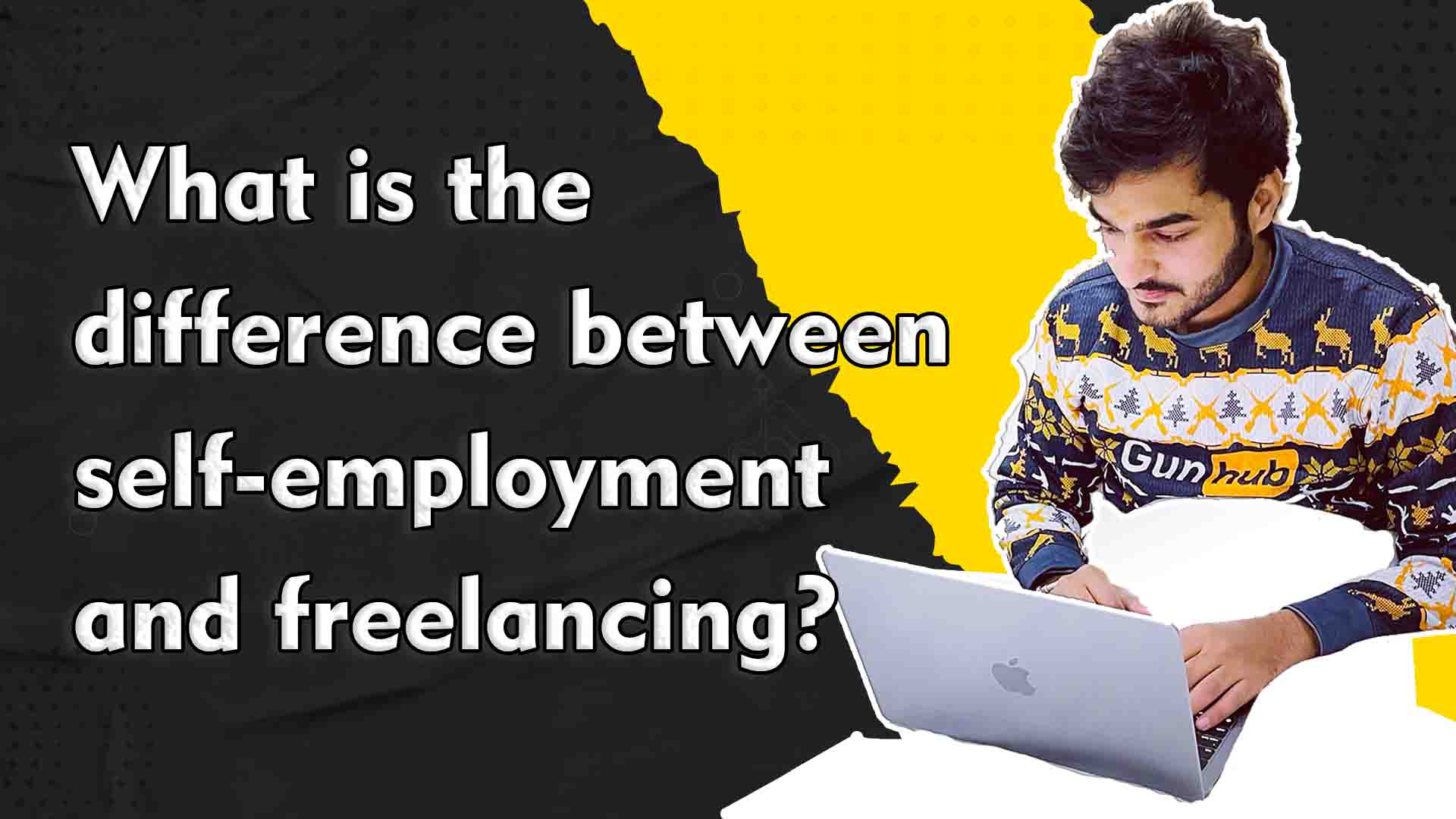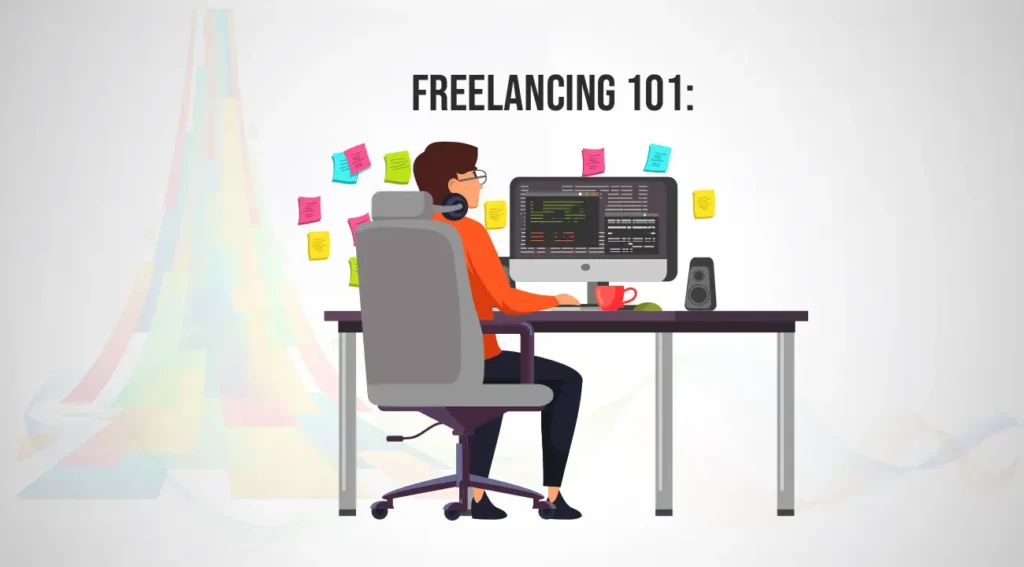What is the difference between self-employment and freelancing lat2023?

In the dynamic landscape of contemporary work, the realms of self-employment and freelancing stand as pillars of professional independence. This article seeks to navigate this landscape, shedding light on the subtle yet significant differences that distinguish self-employment from freelancing.
Unveiling the Distinctions: Self-Employment vs. Freelancing
As we embark on this exploration, our mission is to unveil the distinctions between self-employment and freelancing. While the terms are often used interchangeably, a closer examination reveals nuanced aspects that define these two paths of independent work.
Defining Self-Employment
A. The Entrepreneurial Odyssey
Self-employment is akin to an entrepreneurial odyssey. Individuals in this domain are not merely workers; they are the architects of their professional destinies. The journey involves establishing and operating a venture with singular determination.

B. Singular Ventures and Professional Autonomy
A defining characteristic of self-employment is the singular nature of ventures. These individuals operate as lone entities, exercising a high degree of professional autonomy. The decisions, strategies, and successes are solely their own.
The Essence of Freelancing
A. The Art of Project Agility
Freelancing, on the other hand, embodies the art of project agility. It is about navigating through diverse projects with flexibility and adaptability. Freelancers revel in the freedom to choose engagements, a characteristic that sets them apart.

B. Navigating Diverse Professional Engagements
Freelancers dance through a myriad of professional engagements. Each project is a unique choreography, demanding a different set of skills and expertise. The essence lies in the ability to seamlessly transition from one project to another.
Legal Structures: Self-Employment and Freelancing
A. Sole Proprietorship in Self-Employment
The legal structures form the foundation of independent work. In self-employment, sole proprietorship is a common canvas. This legal arrangement intertwines the individual’s identity with the business entity.
B. Freelancers and the Canvas of Legal Identity
Freelancers, on the contrary, carve their legal identities distinct from their clients. The legal structure they adopt delineates them as separate entities, providing a canvas for their unique professional expressions.
Taxation Variances
A. Tax Implications for the Self-Employed
The financial landscape diverges when it comes to taxation for the self-employed. Individuals navigating the realm of self-employment must navigate the intricate tax terrain, often dealing with unique deductions, obligations, and considerations that come with sole proprietorship.
B. Navigating the Tax Terrain as a Freelancer
Freelancers, in their financial ballet, encounter a different set of movements in the tax realm. The path involves understanding how to optimize financial strategies, considering project-based incomes, and exploring avenues for deductions that align with the flexible nature of freelancing.
Client Relationships in Self-Employment
A. Business-to-Business Dynamics
For the self-employed, the client relationship often adopts a business-to-business (B2B) dynamic. The engagements transcend the individual-client relationship, evolving into collaborations between distinct entities, adding layers of complexity to the professional interaction.

B. Crafting Clientele Affections in Freelancing
Freelancers, in contrast, engage in the delicate art of crafting clientele affections. Building and maintaining relationships with clients become pivotal, as freelancers navigate a diverse array of projects with varied clientele, each relationship holding unique importance.
Independence vs. Collaboration
A. The Solo Symphony of Self-Employment
Self-employment is akin to conducting a solo symphony. Individuals in this domain revel in the autonomy to make decisions, set directions, and orchestrate their professional journeys independently. The symphony is an echo of their singular vision.
B. Freelancers as Collaborative Choreographers
In the freelancing arena, the narrative shifts to freelancers as collaborative choreographers. They blend their expertise with the visions of diverse clients, creating a symphony of collaboration where the end result is a product of collective creativity and skill.
Project Dynamics: A Comparative Analysis
A. Comprehensive Project Ownership in Self-Employment
Self-employed individuals embrace comprehensive project ownership. From inception to completion, they navigate every phase independently. The project is a canvas they paint upon, and the ownership extends across all facets of its execution.
B. Freelancers: Navigating the Symphony of Project Autonomy
Freelancers dance within the symphony of project autonomy. Each project represents a distinct composition, and freelancers navigate the ebbs and flows, adapting their skills to fit the unique demands of each project without necessarily having comprehensive ownership.
Financial Landscapes: Self-Employment and Freelancing
A. Financial Navigation in Self-Employment
Self-employment demands a vigilant approach to financial navigation. Entrepreneurs in this realm must balance income streams, manage business expenses, and cultivate financial resilience, often embracing a broader financial landscape compared to freelancers.

B. Mavericks in the Financial Realm: Freelancers
Freelancers, true to their maverick nature, navigate the financial realm with agility. Their financial landscape is characterized by the flexibility to adapt to varying project scopes and durations, making them financial mavericks in the world of independent work.
Skill Specialization in Freelancing
A. Freelancers’ Niche Odyssey
Freelancers embark on a niche odyssey, specializing in specific skills that define their professional identity. The journey involves honing expertise in particular domains, positioning themselves as specialists sought after for their unique capabilities.
B. Self-Employed: The Broad Spectrum of Skills
In contrast, the self-employed individual often operates across a broad spectrum of skills. Whether it’s managing the business, marketing, or delivering the core service, versatility is a key trait as they navigate the diverse demands of their entrepreneurial ventures.
Risk Management Strategies
A. The Risk Tightrope of Self-Employment
Self-employment, akin to walking a risk tightrope, demands a strategic approach to risk management. Entrepreneurs must balance the inherent uncertainties, make calculated decisions, and implement measures to mitigate risks, ensuring the longevity of their ventures.

B. Freelancers: Navigating the Currents of Professional Risks
Freelancers navigate the currents of professional risks with a nuanced approach. The ability to adapt swiftly to market changes, diversify skill sets, and maintain a robust professional network serves as a lifebuoy in the unpredictable waters of freelancing.
Career Trajectory: Long-Term Vision
A. Legacy Horizons in Self-Employment
Self-employment often involves crafting legacy horizons. Entrepreneurs, driven by a long-term vision, focus on building sustainable ventures that transcend individual efforts, leaving an enduring mark on their industries.
B. Navigating Career Constellations as a Freelancer
For freelancers, the career trajectory involves navigating constellations of diverse projects and experiences. The focus is on adapting to evolving industry landscapes, continually refining skills, and strategically selecting projects that align with their evolving professional aspirations.
Conclusion
A. Crafting Professional Destiny
In conclusion, the journey through self-employment and freelancing is about crafting one’s professional destiny. Whether it’s the entrepreneurial odyssey of self-employment or the agile dance of freelancing, individuals are empowered to shape their paths, defining success on their terms.
B. The Ever-Unfolding Tapestry of Self-Employment and Freelancing
As the curtain falls on this exploration, the tapestry of self-employment and freelancing continues to unfold. The dynamics, distinctions, and nuances weave together to create a rich narrative of independent work—a narrative where individuals embrace autonomy, navigate challenges, and craft their professional destinies with flair and resilience.
In the intricate world of independent work, self-employment and freelancing emerge as distinctive pathways, each with its unique set of challenges and rewards. As we’ve traversed through the nuances of legal structures, tax implications, client dynamics, and financial landscapes, the essence of self-employment and freelancing becomes clearer.
Self-employment, resembling an entrepreneurial odyssey, involves comprehensive project ownership, business-to-business dynamics, and a broad spectrum of skills. Entrepreneurs in this realm balance on a risk tightrope, aiming for legacy horizons in their long-term vision.
On the other hand, freelancing is an art of project agility, collaborative choreography, and niche odysseys. Freelancers navigate the symphony of project autonomy, managing the currents of professional risks, and envisioning their careers as constellations of diverse experiences.
In crafting their professional destinies, whether through the solo symphony of self-employment or the collaborative dance of freelancing, individuals contribute to the ever-unfolding tapestry of independent work. This tapestry, rich with autonomy, creativity, and resilience, invites professionals to embrace the evolving landscape of their careers with open arms.

What Are Framer Website Templates? A brief introduction to Framer as a web design tool and its recent popularity. Explain…

I. Introduction Freelancing, an intricate tapestry of professional independence, has evolved into a prominent force in today’s work landscape. In…


